- Markforged Onyx Filament Review & Alternatives [2024] - December 11, 2024
- 17 Best Professional 3D Printers: Commercial, Desktop, & Industrial [2024] - December 10, 2024
- Best 3D Printers (Industrial, Desktop, & More) [2024 Guide] - July 20, 2024
Clear resin 3D printing allows for the creation of transparent, durable, and aesthetically appealing parts. It’s proven its value from prototyping to production across multiple applications including automotive, medical, and consumer goods, and is particularly well-suited for additive manufacturing applications that require transparent components, optical elements, or high-quality surface finishes.
The demand for transparent resin 3D printed parts has led to the development of various materials, techniques, and equipment designed specifically for this purpose. However, achieving the desired level of transparency and surface finish requires careful consideration of exactly what clear resin to use and what 3D printer to use it with.
This article will cover the types of clear resins available for transparent 3D printing, their use cases, and the best practices for achieving high-quality transparent parts. We will also recommend selecting the right materials, 3D printers, and post-processing techniques to ensure the success of your clear resin 3D printing projects.
What is Clear Resin 3D Printing?
Clear resin 3D printing is a specialized process that utilizes transparent photopolymers to create three-dimensional objects with a high degree of clarity and translucency. This process typically employs Stereolithography (SLA) or Digital Light Processing (DLP) 3D printing technologies, which use a light source to selectively cure the liquid resin layer by layer.
There are several advantages to using clear resins in 3D printing. They:
- Can create parts with intricate details and smooth surfaces, which can be challenging with traditional manufacturing methods.
- Offer excellent optical properties, making them suitable for applications where light transmission and clarity are critical.
- Often exhibit good mechanical strength and durability, making them suitable for functional parts.
However, achieving the desired level of transparency can be challenging, as the process often requires careful post-processing to remove any residual resin or surface imperfections. Additionally, the cost of clear resin materials can be higher than other 3D printing materials, making them more expensive for specific applications. Clear resin 3D printing differs from other 3D printing methods, such as Fused Deposition Modeling (FDM) and Selective Laser Sintering (SLS) since it uses liquid photopolymers rather than solid filaments or powders.
This unique material property enables clear resin 3D printing to achieve greater detail, accuracy, and surface finish levels than other techniques. However, it also requires different equipment and post-processing methods to achieve the best possible results.
What Types of Objects Can Be 3D Printed with Clear Resin?
Clear resin 3D printing offers a versatile solution for creating a wide range of objects across various industries.
Prototypes
Clear resin is widely used for creating prototypes, allowing designers and engineers to visualize complex geometries and internal structures without requiring assembly. This application is beneficial in the automotive, aerospace, and consumer electronics industries, where transparent components are often necessary for functional and aesthetic purposes.
Optical Components
Clear resin 3D printing is also well-suited for producing optical components, such as lenses, light guides, and prisms. The high level of clarity and precision offered by clear resins makes them ideal for applications that demand strict optical performance, such as lighting, imaging systems, and scientific instruments.
Medical Devices
Biocompatible clear resins are used in the medical field to produce accurate models for surgical planning, as well as custom-fit medical devices such as orthodontic aligners and surgical guides. The transparency of clear resin allows for easy visualization of internal structures, making it invaluable for medical applications.
Architectural Models
Architects and designers often use clear resin 3D printing to create detailed, transparent models of buildings and structures. These models can help visualize the design’s aesthetic and structural elements, providing valuable insights for project stakeholders.
Art and Sculptures
Artists and designers can take advantage of the aesthetic qualities and fine details achievable with clear resin 3D printing to create intricate art pieces and sculptures. This material allows for the creation of unique, visually stunning works that showcase the artist’s creativity and skill.
Jewelry and Fashion
Clear resin is also used in the jewelry and fashion industry, allowing designers to create intricate, visually striking pieces with a high level of detail. From custom-designed jewelry to avant-garde fashion accessories, clear resin 3D printing opens up a world of creative possibilities.
Fluid Handling Systems
Due to its chemical resistance, clear resin can create components for fluid handling systems, such as valves, fittings, and containers. These parts can withstand harsh chemicals and corrosive substances, making them suitable for various industrial applications.
While this list highlights some of the most common objects that can be 3D printed with clear resin, the possibilities are virtually endless. With the right materials, equipment, and techniques, clear resin 3D printing can create an array of high-quality, transparent parts across a wide range of industries and applications.
Clear Resins Materials for Transparent 3D Printing
Selecting the appropriate clear resin material for your project is crucial in achieving the desired results. Several clear resins are available, each with unique properties, advantages, and disadvantages.
X45
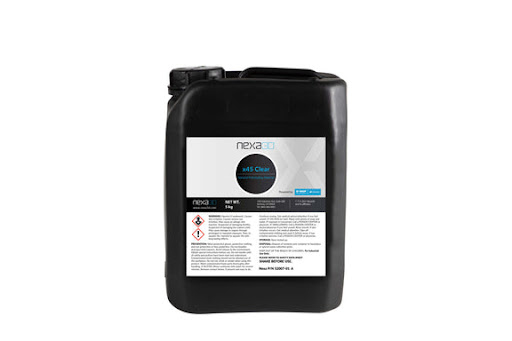
The X45 clear resin is a versatile and durable material suitable for various applications. This resin offers excellent optical clarity, high resolution, and good mechanical properties, making it an ideal choice for prototyping and end-use parts.
Advantages:
- High level of transparency
- Good mechanical strength and durability
- Suitable for both prototyping and end-use parts
Disadvantages:
- It may require post-processing to achieve optimal clarity
Use Cases:
- Automotive parts, such as lenses and light covers
- Architectural models and visualizations
- Product prototypes and consumer goods
xMODEL17-Clear
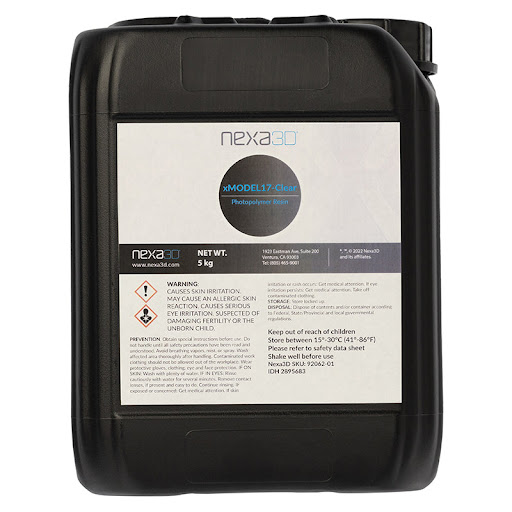
The xMODEL 17-Clear resin is best for producing high-quality, transparent models with exceptional surface finish and fine details. This material is particularly well-suited for applications where visual appearance and surface quality are critical.
Advantages:
- Excellent surface finish and detail reproduction
- High level of transparency
- Suitable for applications requiring a premium aesthetic appearance
Disadvantages:
- Less durable compared to other clear resins
Use Cases:
- Jewelry design and production
- Art pieces and sculptures
- High-quality prototypes for marketing and presentations
xPP405
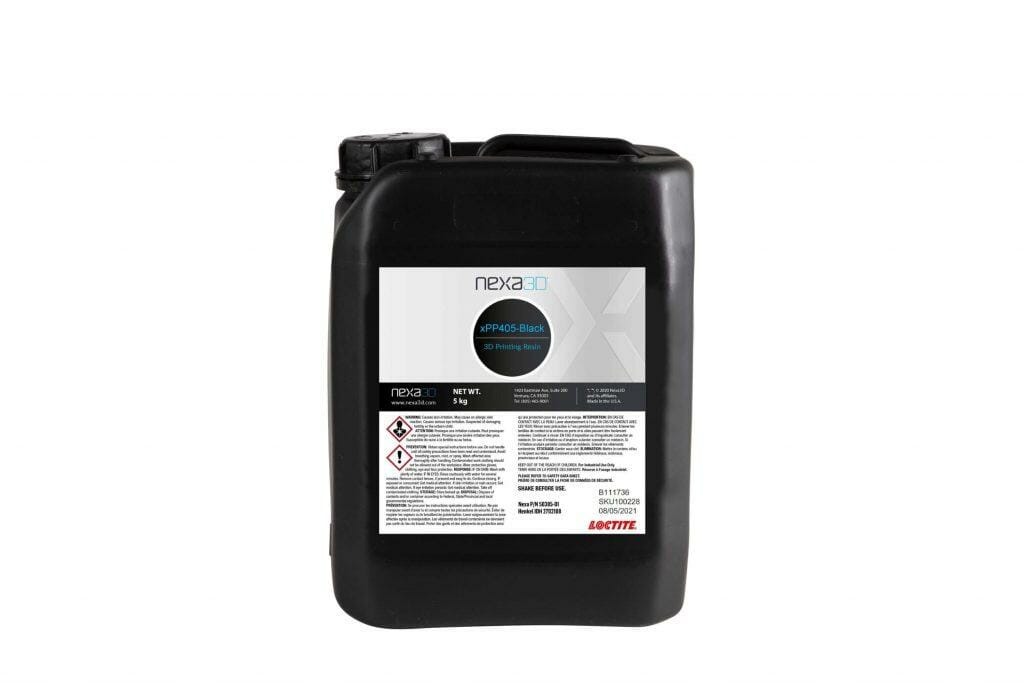
The xPP405 clear resin is known for its excellent chemical resistance, making it ideal for applications in harsh environments or where chemical exposure is a concern. This material also exhibits good mechanical properties and optical clarity.
Advantages:
- High chemical resistance
- Good mechanical properties and transparency
- Suitable for functional parts in demanding environments
Disadvantages:
- It may require additional post-processing for optimal clarity
Use Cases:
- Chemical containers and fluid handling systems
- Industrial parts and components exposed to corrosive substances
- Medical devices and laboratory equipment
Dental Resins
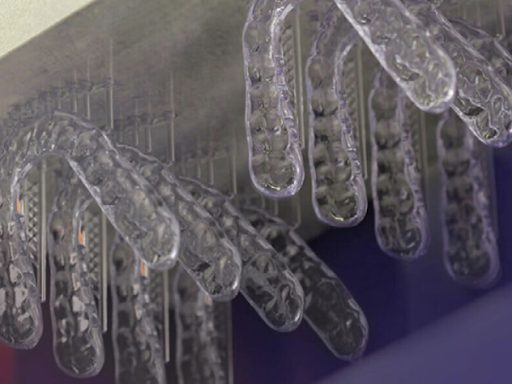
Dental clear resins are formulated specifically for dental applications, offering biocompatibility, high precision, and excellent clarity. These materials can create accurate dental models, aligners, and other dental devices.
Advantages:
- Biocompatible and safe for dental use
- High precision and accuracy
- Excellent clarity for dental applications
Disadvantages:
- Limited to dental applications
Use Cases:
- Dental models and molds
- Clear orthodontic aligners
- Surgical guides and other dental devices
How to 3D Print Clear Parts
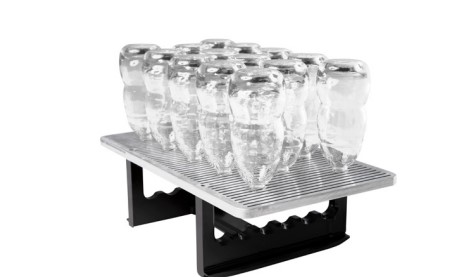
Achieving high-quality, transparent 3D printed parts requires careful consideration of various factors, including material selection, equipment, and post-processing techniques. This section will discuss the steps involved in 3D printing clear parts using clear resins.
1. Choose the Right Clear Resin
Selecting the appropriate clear resin material for your project is crucial for achieving the desired results. As discussed above, several types of clear resins are available, each with unique properties, advantages, and disadvantages.
Consider factors such as transparency, mechanical properties, chemical resistance, and intended application when selecting the best clear resin for your project.
2. Select the Best 3D Printer
SLA and DLP printers are the most commonly used technologies for clear resin 3D printing since they offer high resolution and precise control over the curing process. Consider factors such as build volume, resolution, print speed, and compatibility with your chosen clear resin when selecting a 3D printer.
Nexa3D’s resin 3D printers use Lubricant Sublayer Photo-curing (LSPc) technology, a patented mSLA variant technology, that combines a light array and collimated optical lens layer to ensure light uniformity at an ultrafast speed. This LSPc technology goes a step further utilizing a patented lubricated Everlast 2 membrane. This membrane significantly reduces the “peel force” imposed as each layer is lifted off of the base of the vat. It provides the fastest printer on the market with the largest build area in its class–all without sacrificing part quality and transparency.
3. Post-curing
Post-curing is an essential step in the clear resin 3D printing process. After printing the part, it must be exposed to UV light to ensure the resin fully cures, resulting in a solid and stable object. This step also helps improve the mechanical properties and transparency of the printed part.
Use a dedicated UV curing chamber or a UV lamp to post-cure your clear resin parts, and follow the resin manufacturer’s recommendations for optimal curing times and conditions.
4. Post-processing
Post-processing is critical for achieving the desired level of transparency and surface finish in clear resin 3D printed parts. Several post-processing techniques can help improve the clarity and appearance of your printed objects:
- Sanding & Polishing: To achieve a smooth and transparent finish, sand the printed part using progressively finer grits of sandpaper, starting with a coarse grit (e.g., 400) and working your way up to a fine grit (e.g., 2000 or higher). After sanding, use polishing compounds and a polishing cloth or a buffing wheel to enhance the surface finish and transparency of the part.
- Resin Dipping: Resin dipping involves immersing the sanded and polished part in a clear, low-viscosity resin or a specialized coating solution. This process helps fill any remaining surface imperfections and improves the overall clarity of the part. Ensure that the part is thoroughly cleaned and dry before dipping, and follow the manufacturer’s instructions for curing the dipped part.
- Nitrogen Curing: Nitrogen curing is a technique that involves placing the clear resin part in a chamber filled with nitrogen gas during the post-curing process. This method reduces the amount of oxygen present, which can help achieve higher transparency. However, nitrogen curing may only be suitable for some clear resins and requires specialized equipment.
- Spray Coating: Spray coating involves applying a clear, UV-resistant lacquer or coating to the surface of the sanded and polished part. This process can improve the transparency and surface finish of the part while providing additional protection against UV degradation. Ensure that the part is clean and dust-free before spraying, and follow the manufacturer’s instructions for application and curing.
Use the Best Resin 3D Printer for Transparent Parts
Achieving high-quality, transparent 3D printed parts requires a combination of suitable materials, equipment, and techniques. As discussed in the previous sections, selecting the appropriate clear resin material and optimizing the printing process are significant in obtaining the desired results. However, choosing the best resin 3D printer for transparent parts is equally important.
Nexa3D’s XiP and NXE 400Pro printers stand out as the right choice for clear resin 3D printing due to their exceptional speed, precision, versatility, user-friendly features, and strong support network. Investing in a Nexa3D printer, such as the XiP or NXE 400Pro, can unlock the full potential of clear resin 3D printing, enabling you to produce high-quality, transparent parts with minimal effort and time.
Experience the difference in clear resin 3D printing with Nexa3D.

